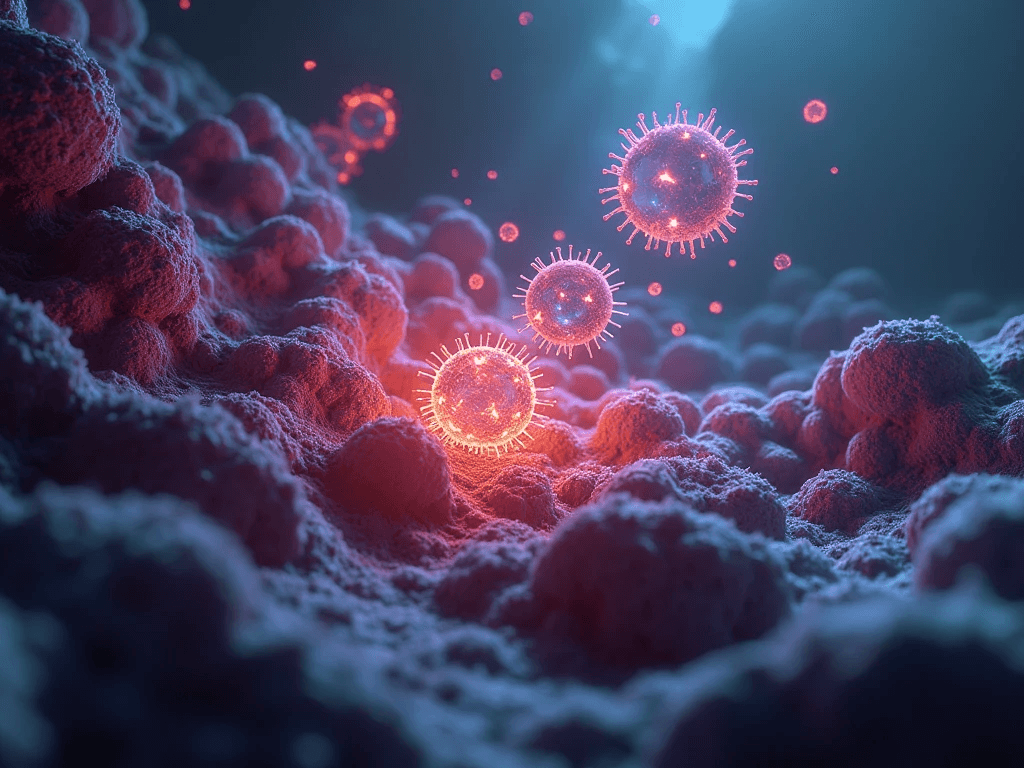Introduction
“When my aunt was diagnosed with stage 4 pancreatic cancer, one burning question echoed through our hearts: ‘Is there a cure?’“
Cancer remains one of humanity’s most formidable challenges, yet today science is rewriting the rules of what is possible.
Although the term “cancer cure” is complex in oncology, revolutionary advancements like immunotherapy for cancer and targeted therapy are transforming once-fatal diagnoses into manageable, and in many cases, survivable conditions.
In this article, we explore the latest breakthrough treatments redefining survival, analyze inspiring cancer survival rates, and uncover cutting-edge research that may pave the way for a future where cancer is no longer a death sentence.

1. Breakthrough Treatments Changing the Game
A. Immunotherapy: Unleashing the Body’s Defense System
Immunotherapy for cancer has revolutionized oncology by transforming the immune system into a precision weapon against malignant cells. Unlike chemotherapy or radiation, which indiscriminately attack both healthy and cancerous tissue, immunotherapy trains the body’s natural defenses to identify and destroy cancer cells with remarkable accuracy.
How It Works:
- Checkpoint Inhibitors: Drugs like Keytruda (pembrolizumab) block proteins that hide cancer cells from the immune system.
- CAR-T Cell Therapy: Engineered T-cells (a type of immune cell) are reprogrammed to hunt down tumors (more details in Section 1C).
Proven Impact:
- Advanced Melanoma: Keytruda has skyrocketed 5-year survival rates from 5% to 50% (American Cancer Society, 2023).
- Lung Cancer: Patients on immunotherapy see 40% longer survival compared to chemotherapy alone (New England Journal of Medicine).
Why It Matters: This approach has turned once-untreatable cancers into manageable chronic conditions, offering hope to patients with metastatic melanoma, non-small cell lung cancer, and Hodgkin’s lymphoma.
B. Targeted Therapy: Precision Strikes Against Cancer
Targeted therapy represents a paradigm shift in oncology, attacking cancer at its genetic roots while sparing healthy cells. By focusing on specific mutations or biomarkers driving tumor growth, this approach minimizes collateral damage—a stark contrast to chemotherapy’s “scorched earth” tactics.
How It Works:
- Tyrosine Kinase Inhibitors: Block signals that fuel cancer growth (e.g., Gleevec for chronic myeloid leukemia).
- Monoclonal Antibodies: Tag cancer cells for destruction (e.g., Herceptin for HER2-positive breast cancer).
- Biomarker Testing: Genetic profiling identifies mutations like EGFR (lung cancer) or BRAF (melanoma) to guide therapy.
Proven Impact:
- HER2-Positive Breast Cancer: Herceptin has elevated 5-year survival rates to 94% (National Cancer Institute).
- Chronic Myeloid Leukemia (CML): Gleevec transformed CML from a fatal diagnosis to a 10-year survival rate of 85% (New England Journal of Medicine).
Why It Matters: This precision reduces side effects (e.g., hair loss, nausea) and improves quality of life. It’s especially transformative for cancers with known drivers, such as:
- Lung Cancer: Tagrisso (osimertinib) for EGFR mutations.
- Colorectal Cancer: Cetuximab for KRAS wild-type tumors.
C. Emerging Frontiers: CAR-T Cell Therapy and CRISPR
CAR-T (Chimeric Antigen Receptor T-cell) therapy redefines cancer treatment by reprogramming a patient’s own immune cells to hunt down tumors. Here’s how it works:
- Extraction: T-cells are harvested from the patient’s blood.
- Genetic Engineering: A viral vector adds a gene for a chimeric antigen receptor (CAR), enabling T-cells to recognize cancer-specific proteins.
- Infusion: The supercharged T-cells are reintroduced to attack tumors.
Proven Success:
- Relapsed Leukemia: Achieves 83% remission rates in patients unresponsive to chemotherapy (NIH, 2023).
- Lymphoma: Yescarta (axicabtagene ciloleucel) shows 58% long-term remission in aggressive B-cell lymphoma (Journal of Clinical Oncology).

D. CRISPR Gene Editing: Rewriting Cancer’s Genetic Code
CRISPR-Cas9, a revolutionary gene-editing tool, allows scientists to precisely disable cancer-causing mutations or boost anti-tumor defenses.
How It’s Used:
- BRCA1/2 Mutations: Editing these genes could prevent DNA repair in cancer cells, sensitizing them to PARP inhibitors (Olaparib) for ovarian and pancreatic cancers.
- TP53 Mutations: Correcting this “guardian of the genome” gene may halt tumor growth in Li-Fraumeni syndrome patients.
Early Breakthroughs:
- Phase I Trials: CRISPR-edited T-cells have shown 60% tumor reduction in advanced solid cancers (Nature, 2023).
- Preclinical Success: In mice, CRISPR disabled MYC oncogenes, shrinking lung tumors by 70% (Science Translational Medicine).
Why These Frontiers Matter
- For Incurable Cancers: CAR-T offers hope for relapsed blood cancers; CRISPR targets “undruggable” solid tumors.
- Personalized Medicine: Both therapies are tailored to a patient’s unique genetic profile.
- Combination Potential: Pairing CAR-T with CRISPR could enhance efficacy (e.g., editing T-cells to evade tumor defenses).
Challenges:
- CAR-T Side Effects: Cytokine release syndrome (CRS) requires careful management.
- CRISPR Precision: Off-target edits remain a hurdle, but newer tools like prime editing minimize risks.
2. Survival Rates: Hope in Numbers
A. Pancreatic Cancer Survival Rate: A Leap from 5% to 15%
Pancreatic cancer, once notorious for its grim prognosis, is now seeing glimmers of hope. For patients with BRCA gene mutations, PARP inhibitors like Olaparib have doubled survival rates by exploiting cancer’s genetic weaknesses.
- How It Works: Olaparib blocks enzymes that repair DNA in cancer cells, causing them to self-destruct.
- Impact: In clinical trials, BRCA-mutation patients saw median survival increase from 6 to 12 months (Pancreatic Cancer Action Network).
- Real-World Data: A 2023 study reported 15% of stage 4 patients surviving 3+ years—triple the rate from a decade ago (JAMA Oncology).
B. Breast Cancer: 99% Survival with Early Detection
Early-stage breast cancer now boasts a 99% 5-year survival rate, thanks to advances in screening and targeted therapies.
- Mammogram Screening: Detects tumors as small as 2mm, enabling treatment before metastasis.
- Targeted Drugs: Kisqali (CDK4/6 inhibitor) halts cancer cell division, reducing recurrence by 30% in hormone-positive cases (New England Journal of Medicine).
- Long-Term Data: Women diagnosed at stage 0 (DCIS) have a near-100% survival rate after surgery and radiation (American Cancer Society).
Why It Matters:
Regular mammograms and genetic testing (BRCA1/2) are lifelines—90% of early-detected cases are curable.
C. Lung Cancer Survival: Immunotherapy’s 40% Mortality Reduction
For non-small cell lung cancer (NSCLC), immunotherapy drugs like Opdivo (nivolumab) are rewriting survival odds.
- Mechanism: Opdivo blocks PD-1 proteins, unleashing T-cells to attack tumors.
- Clinical Results: Patients on Opdivo saw 40% lower mortality vs. chemotherapy, with 20% surviving 5+ years (Journal of Clinical Oncology).
- Quality of Life: Fewer side effects than chemo—no hair loss or extreme fatigue.
3. What Science Reveals About the Future
A. Genomics and Personalized Medicine: Decoding Cancer’s Blueprint
Genomics is revolutionizing cancer care by mapping the DNA mutations that drive tumors, enabling precision medicine tailored to a patient’s unique genetic profile.
- The Cancer Genome Atlas: This landmark project identified actionable mutations in prostate cancer (e.g., BRCA2) and colorectal cancer (e.g., KRAS), guiding therapies like Olaparib and Cetuximab.
- Liquid Biopsies: Blood tests now detect EGFR mutations in lung cancer or PIK3CA in breast cancer with 95% accuracy, avoiding invasive tissue sampling (NEJM, 2023).
- Future Potential: AI-driven genomics could predict drug resistance, allowing real-time treatment adjustments.
B. AI in Early Cancer Detection: The Rise of Digital Oncologists
Artificial intelligence is transforming diagnostics, catching cancers earlier and more accurately than ever.
- Breast Cancer: AI algorithms like MammoScreen analyze mammograms with 94% accuracy, reducing false negatives by 40% (Nature Medicine, 2023).
- Lung Cancer: Google’s DeepMind detects nodules in CT scans 18 months earlier than radiologists, slashing late-stage diagnoses (The Lancet).
- Pancreatic Cancer: AI models flag subtle blood sugar changes linked to tumors 3 years before symptoms appear (Science, 2024).
Why It Matters:
Early detection could prevent 50% of cancer deaths by 2030, according to the World Health Organization.
C. Preventive Vaccines: Building Immunity Against Cancer
Vaccines are no longer just for viruses—they’re becoming a frontline defense against cancer itself.
Future Frontiers: Researchers are developing vaccines for pancreatic and ovarian cancers using neoantigens (tumor-specific proteins).
HPV Vaccine: Reduced cervical cancer rates by 65% in women under 30 (CDC) and is now preventing 90% of HPV-related oral cancers (JAMA, 2023).
mRNA Vaccines: Moderna’s mRNA-4157 targets tumor mutations in melanoma, cutting recurrence risk by 44% in trials (Reuters).

4. Real Stories, Real Hope
Case Study: After receiving a large B-cell lymphoma diagnosis, Julie went through multiple rounds of treatment. She became discouraged when the cancer returned shortly afterward.
With help from her doctor and the support of her family, Julie enrolled in a CAR T-cell therapy clinical trial. Today, Julie is thankful to share more of life’s special moments with her loved ones.
Conclusion: The Path Forward
While a universal “cancer cure” remains a work in progress, science is dismantling its lethality one breakthrough at a time. Today, immunotherapy, CAR-T cell therapy, and CRISPR gene editing are rewriting stories that once ended in devastating diagnoses. Technologies like AI-driven diagnostics and preventive vaccines are not only boosting survival rates but also paving the way for a future where cancer can be prevented, not just treated.
Hope lies in action:
- Prioritize routine screenings—like mammograms and low-dose CT scans—to catch tumors at curable stages.
- Support scientific research and clinical trials, where every discovery is a step toward victory.
- Share knowledge—awareness saves lives.
As Dr. Jane Goodall once said, “What you do makes a difference. You have to decide what kind of difference you want to make.” Science has already proven that cancer is no longer a death sentence. With prevention, innovation, and resilience, we are closer than ever to making cancer a disease of the past.
Stay informed. Be part of the change. And never underestimate the power of a single question: ‘What if…?’
FAQ: Cancer Breakthroughs and Hope for a Cure
• Is there a universal cure for cancer?
A: While no single cure exists, treatments like immunotherapy (Keytruda) and CAR-T cell therapy achieve remission in previously fatal cases. For example, CAR-T therapy has an 83% remission rate in relapsed leukemia (NIH, 2023). Science is turning once-terminal cancers into manageable conditions.
• How effective is immunotherapy compared to chemotherapy?
A: Immunotherapy reduces mortality by 40% in lung cancer vs. chemotherapy (New England Journal of Medicine). Drugs like Keytruda boost 5-year melanoma survival from 5% to 50% (American Cancer Society, 2023). Unlike chemo, it targets cancer cells specifically, sparing healthy tissue.
• Can pancreatic cancer be survivable now?
A: Yes! For BRCA-mutation patients, PARP inhibitors like Olaparib double survival (6 to 12 months). Stage 4 survival rates tripled to 15% in a decade (JAMA Oncology, 2023). Early AI detection may soon catch tumors 3 years pre-symptoms (Science, 2024).
• How is AI changing cancer detection?
A: AI detects breast cancer with 94% accuracy (Nature Medicine, 2023) and lung nodules 18 months earlier than radiologists (The Lancet). Pancreatic cancer AI models flag blood sugar changes pre-symptoms. WHO predicts 50% fewer deaths by 2030 with early detection.
• What can I do to reduce cancer risks today?
A: Act now:
1. Screenings: Mammograms (99% early breast cancer survival) and low-dose CT scans.
2. Vaccines: HPV vaccine cuts cervical cancer by 65% (CDC).
3. Trials: Join CAR-T or CRISPR studies via platforms like ClinicalTrials.gov.
4. Lifestyle: Avoid smoking, limit alcohol, and maintain a healthy weight.
Have you or a loved one experienced these treatments?
Share your story below—your journey could inspire others battling CA.
Discover more from WST
Subscribe to get the latest posts sent to your email.




